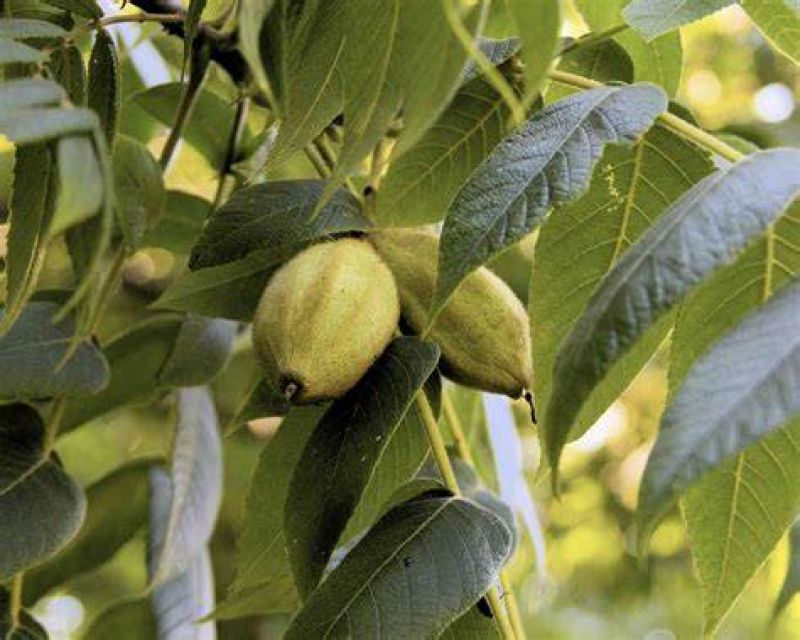Jeff Green | Nov 03, 2021
Among the hardwoods and softwoods in the temperate forest in Southeastern Canada and the Northeastern United States, butternut trees are commonly found outside of the forest canopy, on fence rows and in open fields.
They are a short lived (75-100 years), small to medium, deciduous tree in the walnut family. They are native to Southern Ontario and Quebec, and New Brunswick. Butternuts have had a variety of uses for First Nations, as a food source, and a source of oil for cooking, leather making and tool polishing.
The wood from butternut trees is prized by woodworkers because of its softness, colour, and texture.
They can be identified by their leaf structure. The leaves are compound, 25-40 cm long, with 11-17 on a stalk. The leaves can be distinguished from black walnut leaves because they are arranged opposite to one another and have no stalk, whereas black walnut leaves are staggered from each other, one the vine, and have a small stalk.
Although their origin is unknown, butternut cankers, which were first identified in 1991, are presumed to be derived from Asia. It is considered a non-native disease, and has decimated butternut trees across the entire range.
Butternuts are susceptible to the canker at any age. The canker is caused by a fungus that infects the tree, and kills the cambium layer in patches (cankers). The cankers expand to encircle branches and stems and cut off the flow of water and nutrients. As the disease progresses, branches die back and the sunlit part of the crown becomes visible.
There is no cure for the canker, and butternuts have been designated as an endangered species under Species at Risk Act in Ontario.
“There is no known cure for the disease but there is hope in locating trees that appear to have a natural tolerance to the disease. These rare individuals are the focus of the recovery program, in Ontario, for seed collection to produce vigorous seedlings for out-planting and to clone the genetic material of these trees, through grafting, in an effort to eventually save the species,” according to the Butternut Recovery page on the Rideau Valley Conservation Authority (RVCA) website.
Rose Fleguel has been running the Butternut Recovery Program for RVCA for ten years.
The program does several things,
It informs landowners about the endangered status of butternut and encourages them to maintain their healthy trees.
It locates, assesses and maps healthy butternut trees, to be logged in a seed-source geodatabase.
It collects seeds from healthy trees and those showing signs of tolerance throughout Eastern Ontario.
It grows seedlings from these seeds each fall at the Ferguson Forest Centre in Kemptville for the Landowner Butternut Planting Program.
The Landowner Butternut Planting Program distributes 2,000 vigorous seedlings, to hundreds of landowners across Eastern Ontario, to replace dead and dying butternut trees
The program also tracks survival and health of planted butternuts via landowner volunteer reporting.
Those who are interested, either in identifying healthy Butternuts to enter the database of healthy trees and collect seeds, or in planting seeds on their property, or in planting seedling and cultivating healthy trees on their property, can contact Rose Fleguel at This email address is being protected from spambots. You need JavaScript enabled to view it.
A Youtube video about the Butternut Recovery has been posted on the RVCA twitter page and is also available directly on Youtube.
More Stories
- No Winner Yet in Catch The Ace But Fundraising Target Met
- South Frontenac Food Bank Opens Second Location in Battersea
- Sharbot Lake Pentecostal Church Anniversary - 1925-2025
- Frontenac Holistic Health Fair - September 20 At Storrington Centre
- Odd Year For Real Estate - But Sales Are Steady Year Over Year
- 193rd Kingston Fall Fair
- Kim Phuc - the Napalm Girl - To Visit Flinton In November
- South Frontenac Council - September 2
- Sticker Shock - EV Charging Station To Cost North Frontenac Township
- 30th Anniversary Verona Car Show

